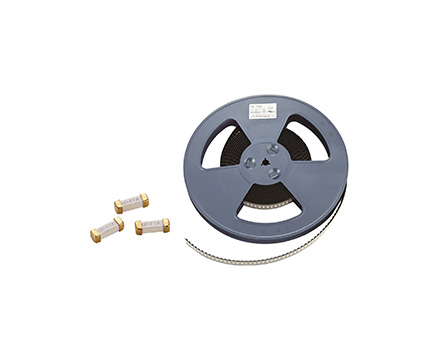
Rated voltage
The nominal working voltage of a fuse, codenamed Un, is generally rated at 32V, 60V, 125V, 250V, 300V, 500V, 600V, and 1200V. Fuses can be used at a voltage not exceeding their rated voltage, but are generally not approved for use in circuits with a circuit voltage greater than the rated voltage of the fuse.
Voltage drop
When the rated current is applied to the fuse, the voltage measured at both ends of the fuse when the fuse reaches Thermal equilibrium, that is, when the temperature is stabilized, is Ud. Due to the voltage drop at both ends of the fuse having a certain impact on the circuit, there are clear provisions for voltage drop in European regulations.
Fuse resistance
Usually divided into cold resistance and hot resistance, cold resistance is the resistance value measured by a test current less than 10% of the rated current at a fuse temperature of 25 ℃. The thermal resistance is converted from the voltage drop measured at the full rated current value as the test current, and its calculation formula is Rthermal=Ud/In. Usually, the thermal resistance is larger than the cold resistance, and the fuse resistance value provided by our company is the cold resistance value and is only used as a reference.
Overload current
Overload current refers to the current flowing through a circuit that is higher than normal operation. If the overload current cannot be cut off in a timely manner, it may cause damage to other devices in the circuit. Short circuit current refers to the current generated by partial or complete short circuits in a circuit, which is usually large and larger than overload current.
Fusing characteristics
That is, the time/current characteristic (also known as the ampere second characteristic). There are usually two expression methods, namely I-T diagram and test report. The I-T diagram is a curve formed by connecting the average fusing time coordinate points of fuses under different current loads in a coordinate system composed of load current as the x coordinate and fusing time as the y coordinate. Each model and specification of fuse has a corresponding curve that represents its fusing characteristics. This curve can be used as a reference when selecting fuses. A test report is a record of test data conducted in accordance with standard requirements for testing projects. Our I-T chart and test report are both based on the data measured under experimental conditions, and there may be differences in the curve or test report under actual usage conditions. Therefore, the test report provided by our company and the I-T chart are only for reference.
Read recommendations:
short circuit capacity bs 1362 fuse
Design principle of patch fuse.starter motor fuse
battery terminal fuse replacement.Application Field of Domestic Disposable Fuses